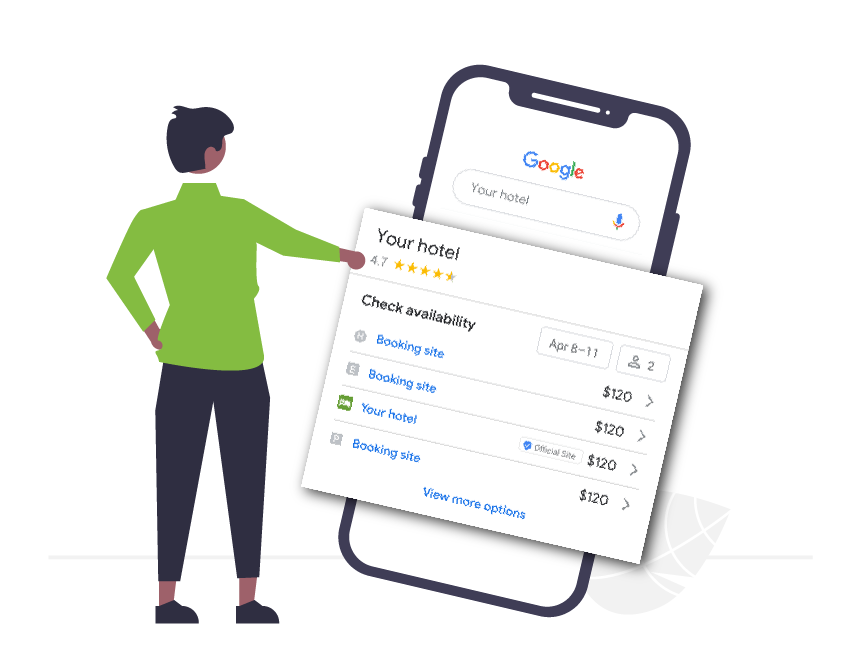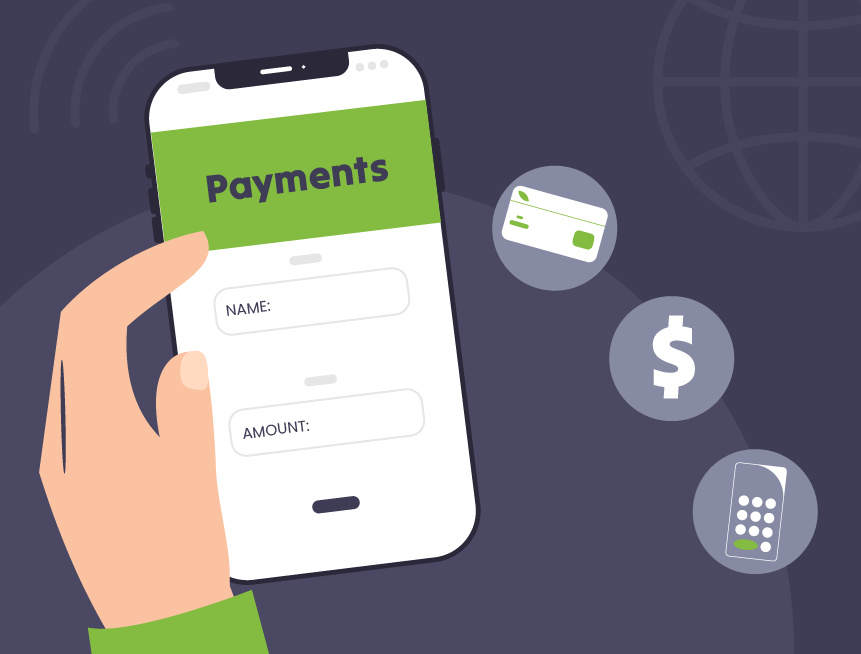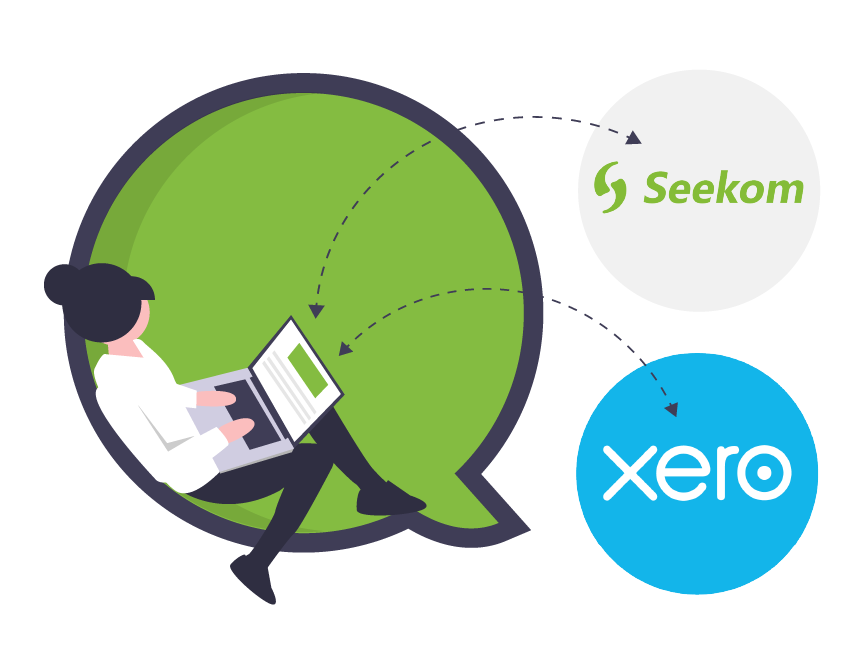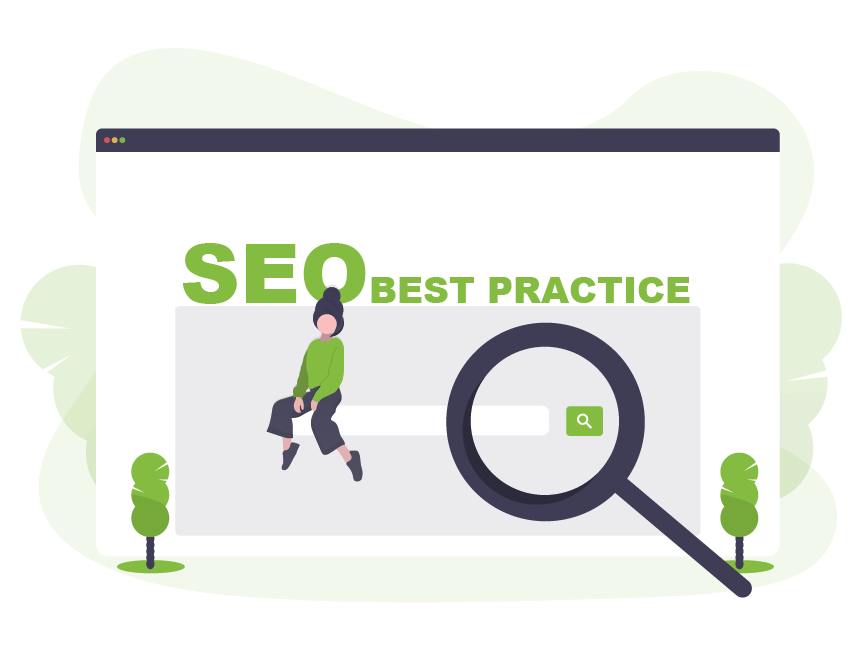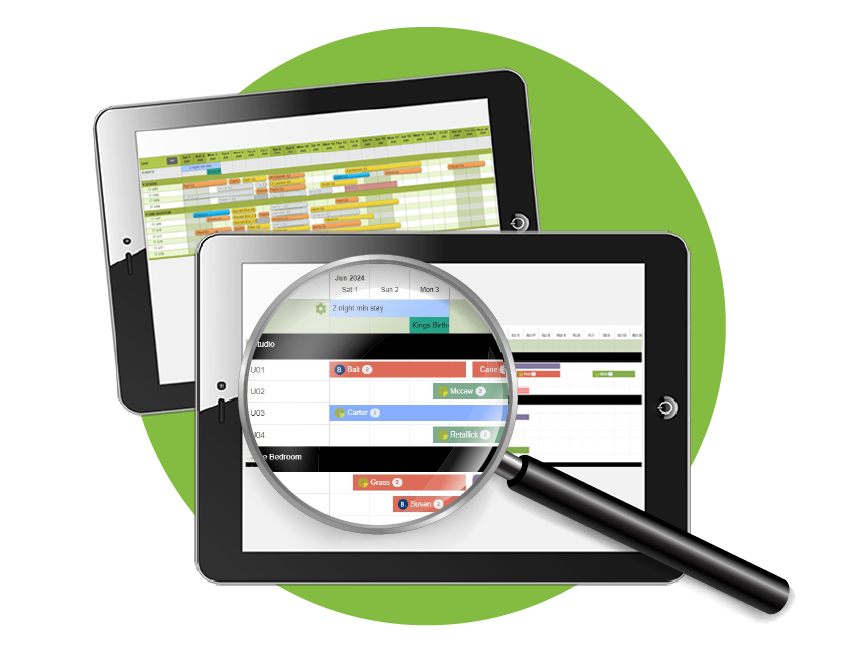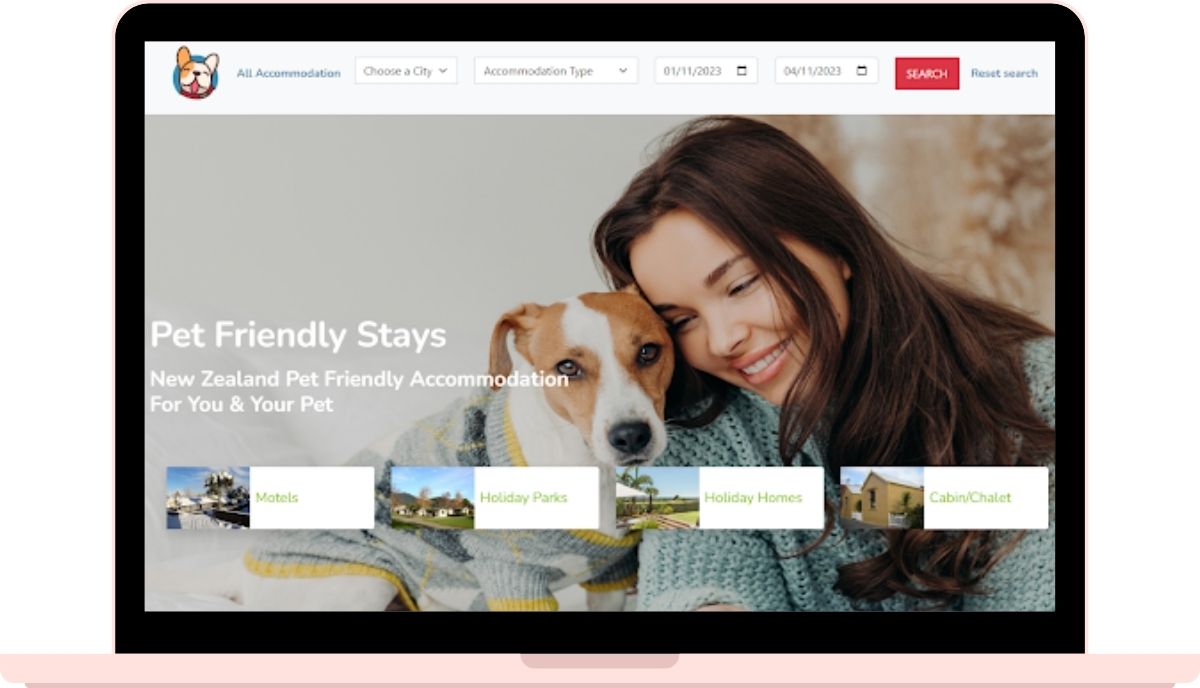
Northland holiday park snaps up awards helped by leading software system
Owner operators: Nick and Claire Blake
Whangārei TOP 10 Holiday Park is one of the jewels in the crown of the Northland accommodation scene, with a clutch of awards to shout about and a smooth operation supported by Seekom’s savvy software.
Owner operators Nick Blake and his wife Claire kicked off their hospitality careers at Fox Glacier TOP 10 Holiday Park in 2013, working their way up and buying Whangārei TOP 10 Holiday Park in 2016.
Nick says they changed the Whangārei holiday park’s property management platform to Seekom immediately because they liked how it worked, it was great for group bookings and had everything they wanted to manage the cabins, campsites and caravan sites at the park.
“We’ve used all the major booking and property management systems and we find Seekom suits our park the best.”
The Blakes rely on their silent software partner to quietly take care of business behind the scenes, letting them concentrate on their priorities: friendliness, cleanliness and winning awards!
Whangārei TOP 10 Holiday Park won the Top Guest Experience – Classic Park Award and was runner-up in the ReviewPro Cleanliness Award at this year’s TOP 10 Annual Awards. The recognition builds on its success in the same awards in 2022, where the park won the Top Guest Experience Award – Small Park Award.
Nick says recent Seekom software updates have added functionality that makes life easier for holiday park staff and customers. He’s pleased Seekom understands what its users need rather than adding functionality just for the sake of it.
“Some of the other booking systems have all these bells and whistles that aren’t functionally useful and can make systems complicated for guests to use - Seekom communicates really well with back-end and online booking systems.”
Another benefit of using Seekom is the embedded email and SMS (text) customer communication functionality that saves time and keeps customers updated with everything they need to know to make the most of their stay, he says.
“It’s got some really good automated functionality which sends out emails and texts to customers – it does everything you need.”
Nick says he’s been contacted by a lot of other holiday park managers from across New Zealand since he shifted Whangārei TOP 10 Holiday Park’s systems to Seekom. After explaining the cost, functionality and support benefits Seekom provides, many of them had made the move as well, he says.
“When we changed over to Seekom we brought over about 10 or 12 parks – I would definitely recommend Seekom.”
Seekom’s cloud-based software allows easy access on any browser-equipped device with internet access and handles the heavy lifting of updates, backups, and keeping data secure, giving accommodation providers more time to run their business and look after their customers.
In 2018 Whangārei TOP 10 Holiday Park was inducted into the prestigious 2018 TripAdvisor Hall of Fame, becoming a member of a select group of businesses that have succeeded in achieving TripAdvisor’s Certificate of Excellence for five consecutive years. Continuing its momentum of recognition, the holiday park was recognised as Winner of the Northland Business Excellence Awards in 2019.
Perhaps there’s something in the water in Whangārei, or maybe it’s in the cloud…

Note: Something you may not know, is that we also build websites. Many of our customers have Seekom built, fully managed websites which we maintain, including SEO management. If you’re interested in finding out more about this, get in touch.
One of our amazing business development managers will be in touch to showcase our product to you and talk you through how we can help grow your business.
Seekom Blog
Smarts to help you operate more effectively and efficiently. From guides of our systems and integrations to tips and tricks you can use every day - we've got you covered.
Contact Us
PO Box 9300, Marion Square, Wellington 6141
Phone (NZ) : +64 4 974 9588
Phone (UK) : +44 20 3835 5939
Support: support@seekom.com
Websites: webhelp@seekom.com
Copyright 2022 © Seekom Limited (NZ owned)
Picking the right integrated payment solution for your online bookings
Online bookings make up a large portion of most accommodation providers’ revenue. That’s the reason many hotels, motels and holiday parks put so much effort into ensuring the booking engine on their website is easy to use and presents their accommodation in the best possible light.
However, there is another link in the online booking chain that isn’t always given the attention it deserves, and that’s the payment solution you chose to handle online card payments.
This is the technology that ensures payments made by your guests when they make a booking are transmitted securely to a payment processor and can ultimately make it into your bank account.
There are a myriad of payment solutions available, ranging from having separate arrangements with an acquirer, payment gateway intermediary and a network, to a simple one stop shop such as SeekomPay that provides a full payment solution with seamless integration into our Seekom property management software.
The payment solution you choose can have a big impact on your balance sheet and cash flow, so it’s worth taking the time to consider a few key points when deciding which one to use.
Integrations - will the payment solution work with your existing systems?
If you’ve invested a lot of time into your website, online booking engine and other systems, you will want to make sure the payment solution you choose plays nicely with them.
There are many solutions available that can be integrated with your platform of choice. For example, Seekom works seamlessly with our SeekomPay solution and we also offer integrations with a range of other payment gateway providers.
Before you settle on your payment solution, consider the systems you currently use and make sure they offer integrations with your preferred choice.
Security – is it PCI compliant and does it protect customer card details?
According to Statista, e-commerce losses to online payment fraud were estimated at US$41 billion in 2022. For this reason, security should be high on your list.
The gold standard for security, and the one all online merchants should aspire to, is Payment Card Industry Data Security Standards (PCI DSS) compliance. PCI DSS is a set of international security regulations implemented by card schemes to safeguard credit and debit card transactions while preventing the misuse of cardholders' personal information.
Using a PCI DSS compliant payment solution means transactions are securely encrypted and appropriate steps are taken throughout the transaction chain to protect your customers, and yourself, from the impacts of fraud.
Some payment solutions also offer ‘tokenisation’, which allows a customers’ credit card details to be securely stored. This is particularly useful if you have repeat bookings at your accommodation as it means guests won’t have to enter all of their card details to pay every time they book online with you.
Another consideration is whether the payment solution uses 3D Secure 2.0. This technology analyses each transaction made on a card and gives it a risk rating. If the transaction is deemed high risk, the customer is required to provide further evidence of their identity, often by entering a password or a code sent to their personal email or mobile device. This can reduce fraud stemming from stolen cards.
Payment options – what payment methods does the solution support?
The purpose of your payment solution is to help facilitate payments from your customers, so it makes sense to consider what payment methods it supports.
Think about the credit cards your customers use and any other ways they like to pay for their bookings and choose a solution that supports those methods.
Also consider whether or not you need a physical payment terminal. Payment terminals generally attract a monthly fee, and if your guests are almost entirely booking online (and rarely pay on site), you could be saving money by setting up a virtual terminal, if this is supported by the payment solution you're considering
Simplicity - does your payment solution involve several parties, or just one?
The world of payments is complex and it helps to understand the differences between various links in the payments ‘chain’, so you can assess where you might be able to minimise unnecessary overheads and agreements with different providers.
For payments to be fully processed, there are three key components:
- the payment gateway, which is the secure online page where a customer enters their credit card details to complete a transaction.
- a merchant acquirer, which is the financial institution that processes transactions they receive from the payment gateways or your on-site terminals, on your behalf. They act as the intermediary with the ‘schemes’ (e.g. Visa, Mastercard), to approve transactions and then settle those into your bank account.
- The network (e.g. EFTPOS NZ or Worldline), which sits between the gateway and the merchant acquirer.
Many accommodation providers will have separate agreements with each of these entities to enable payments to be processed, and in some cases they won’t be integrated with the accommodation provider’s property management system. Other payment solutions, such as SeekomPay, facilitate all of these components, making life simpler and more often than not, saving money.
Fees – what will your payment gateway cost you?
Another consideration is cost.
Payment gateway providers typically charge a monthly fixed fee, plus a fee on each transaction they process. Usually they’ll charge a minimum monthly fee if your transactions fall below a certain threshold.
Merchant acquirers charge a merchant service fee (a percentage of the transaction value). In some cases merchant service fees are charged as a ‘blended rate’, where all card types incur the same fees, while in other cases an acquirer may charge different merchant service fees depending on the card type, i.e. a rate for domestic debit and credit cards, a rate for commercial & premium cards and then an additional loading for international cards.
Networks charge a monthly fee in New Zealand.
The fees and rates you will pay for your full payment solution can vary, so it’s worth checking what kind of impact they will have on your bottom line. It’s also worth finding out about any other hidden fees, along with potential initial setup fees.
It’s a balancing act – looking at the best merchant service fee alone might not be the best deal for you if you’re also paying fees and charges to other providers, needing up to three separate direct debit arrangements and missing other components, such as the benefits of having a solution that is fully integrated with your property management software. And remember, you can offset your merchant service fee by applying a surcharge. This is common globally, including in Australia, and is becoming more accepted in New Zealand.
Support – if something goes wrong, who can you call?
While payment solutions should run without a hitch, payments involve complex infrastructure and there is always the possibility that something could go wrong. If the worst happens, will you be able to get support or information quickly?
For New Zealand and Australian accommodation businesses, there is benefit in choosing a local provider with a support team that operates in the same time zone. You will also want to make sure you can reach them on the phone if needed – there’s nothing worse than having an urgent issue and only being able to contact support by email.
So you’ve chosen your payment solution. What’s next?
Choosing the right payment solution is the hard part, but before you can start accepting credit card payments from guests for the first time or via your new chosen solution, you'll need to complete and submit a merchant application form.
This application is a prerequisite to establishing a merchant account with your chosen payments provider, and requests information such as business profile details, owner details, processing details, and transaction information. It allows the merchant acquirer to obtain a profile about you and your business and helps them assess the merchant application for
approval.
To ensure you don’t have to stop-start when completing the application form, be prepared and make sure you have certain things on hand, such as:
- a form of ID (e.g. driver’s licence, passport)
- proof of bank account
- proof of trading address
- average transaction size and annual turnover.
Completing application forms can be a daunting task and sometimes puts people off from changing providers, even though it is financially beneficial for them. At Seekom we make this process as easy as possible by pre-completing as much of the application as possible based on discussions with our customers. All they need to do is to complete the sections that
require proof of ID, bank account and trading address.
Once done, the application will be assessed for approval. Once approved, you will be onboarded as a merchant and can soon begin accepting guest payments.
If you opt to have a separate payment gateway intermediary you’ll need to complete a separate application in addition to the merchant application. The requirements for this application are typically not as intensive as for the merchant application.
Whatever you choose, it’s worth monitoring your performance and keeping your options open as online transactions can play a large role in the success of your accommodation business. In this regard it may be helpful to choose a provider that doesn’t lock you into a long-term contract – our own SeekomPay solution is provided on an open-term agreement so you can join and leave as you please.
Interested in using SeekomPay? We are offering to waive SeekomPay sign-up fees for any businesses that join before the end of October 2023. To find out more, visit our SeekomPay page.
One of our amazing business development managers will be in touch to showcase our product to you and talk you through how we can help grow your business.
Seekom Blog
Smarts to help you operate more effectively and efficiently. From guides of our systems and integrations to tips and tricks you can use every day - we've got you covered.
Contact Us
PO Box 9300, Marion Square, Wellington 6141
Phone (NZ) : +64 4 974 9588
Phone (UK) : +44 20 3835 5939
Support: support@seekom.com
Websites: webhelp@seekom.com
Copyright 2022 © Seekom Limited (NZ owned)

Interest in Pet Friendly Stays growing in lead up to summer
Visits to Seekom’s Pet Friendly Stays booking site are on the rise as New Zealanders rush to secure summer holiday accommodation with space for their paw-some furry friends.
The website, created as a central hub for New Zealand’s pet friendly accommodation, was viewed more than 5,000 times across September and October. Bookings via the site are increasing and a growing number of accommodation providers are listing their pet friendly accommodation to capitalise on a relatively untapped segment of the accommodation market.
Seekom General Manager Nicole Irschick said holidaymakers often struggled to find pet friendly accommodation and Pet Friendly Stays was helping to save them hours trawling the internet.
“We’re reaching a time of year when people look to lock-in their summer holiday plans. With many kennels and catteries fully booked and a growing number of New Zealanders looking to take their pets away on holiday with them, we’ve noticed a real uptick in traffic.”
According to a survey run by Companion Animals New Zealand, nearly two thirds of New Zealanders own pets, with dogs being the most common and cats coming a close second.
Pet Friendly Stays received a positive media reception when it launched last year, with coverage on Newshub, Today FM and in hospitality and leisure publications including Hotel Magazine and Australasian Leisure Management.
The site allows Seekom users to showcase aspects of their properties that pet owners might find relevant, including information about local amenities such as dog parks, pet-friendly walking trails, or nearby vet clinics.
At a glance: September visits to Pet Friendly Stays
- More than 5,000 website views across September and October
- Most searches were from Auckland, Christchurch and Wellington
- Bookings are on the increase in the lead up to summer 'howl-idays'.
Contact our support team using the demo request form below to find out more. Once set up, pet friendly accommodation can be managed directly from Seekom iBex, removing the need to manage rates and other property information on multiple platforms.
[hubspot type=form portal=9090717 id=ca66daee-ae0d-4a69-b3bf-4e9d97747c2a]
Sign Up For Updates
Recent Blog Post
Smarts to help you operate more effectively and efficiently. From guides of our systems and integrations to tips and tricks you can use every day - we've got you covered.
Contact Us
PO Box 9300, Marion Square, Wellington 6141
Phone (NZ) : +64 4 974 9588
Phone (UK) : +44 20 3835 5939
Support: support@seekom.com
Websites: webhelp@seekom.com
Copyright 2022 © Seekom Limited (NZ owned)
Stay scam savvy: keep your guard up with Seekom
While customers bear some personal responsibility for avoiding scams, it’s also crucial that companies can be relied on to safeguard the data they hold on their customers’ behalf.
After all, the last thing you want is for any credit card details or your business’ email list to be stolen by scammers and used with malevolent intent.
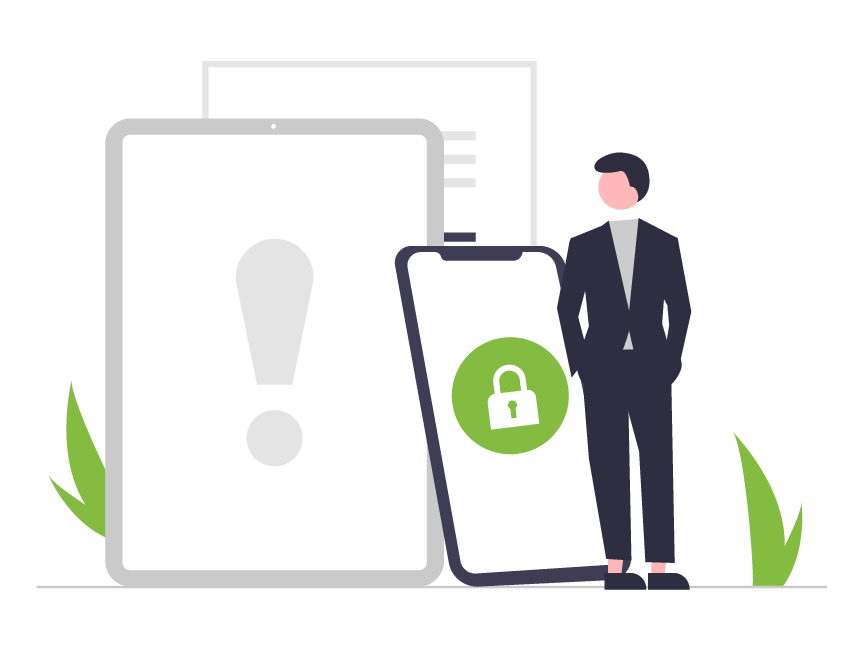
It can sometimes be hard to identify scams, not least because scam types and techniques are constantly evolving, but also because scammers often use psychological techniques to make it less likely for people to identify a scam.
Scammers contact their targets via all sorts of methods: text, email, phone, social media, messaging apps, fake websites, or even in person. Regardless of the scam, or how it is presented, there are some established actions you can take to reduce the likelihood of being taken in by it.
Maintain a healthy level of scepticism
Maintaining a healthy level of scepticism is no bad thing. Anyone contacting you legitimately will respect the fact you might need to ask some hard questions upfront before you are comfortable dealing with them.
Also, if you are asked for money or to confirm personal details, take some time to think before you respond. Very few situations are so urgent that you need to act straight away. If you’re not sure whether a request is legitimate, you could phone someone you trust to get an objective perspective on the situation, or Google the company’s details and contact them through their official website.
If they have emailed you, carefully check their email address - does it look suspicious or is it a slight variation on their business name (e.g. an extra character added in the middle - think @nike.com instead of @ni-ke.com)? Many banks maintain lists of known scams from people pretending to be bank staff. So it is worth keeping up to date with those as well (e.g. you can view BNZ’s ‘latest scams’ page here).
One of the more worrying approaches used by some scammers is blackmail, or demands for a ransom. In some cases this can involve claims that they have hacked your system and a threat that they will release information that is embarrassing or financially damaging if payment isn’t made, while in other cases they may demand a ransom to restore access to systems they claim to have taken control of. It is possible that your security may have been compromised, but in many instances these claims are bluffs, so don’t take all such claims at face value and get an expert to look into it.
Make sure your staff permissions are up to date and beware of attachments
If you have multiple staff using your online systems, now may be a good time to review the permissions you have in place. It’s easy to forget to update permissions when someone moves into a new role within your business, or to forget to remove their account when they leave. Undertaking regular account and permissions reviews, as well as having sound policies in place for how team members should store and protect passwords, is time well spent.
It goes without saying you should never open attachments or click on links you’re not confident are from a reliable source – you could be opening a Pandora’s box of malicious code ready to infiltrate your computer or personal device.
For more useful advice check out Consumer Protection NZ advice on avoiding scams.
And of course, always remember the ancient adage your parents might have told you: if it seems too good to be true, you’re probably about to get scammed hard.
The Auckland Transport example
In September this year, Auckland Transport suffered its second ransomware attack in a month when a group called Medusa threatened to release financial data it claimed to have stolen from the agency’s ticketing system.
The initial attack crashed Auckland Transport’s HOP card system, meaning top ups of customers’ travel cards and other HOP services had to be taken offline.
The agency responded promptly by getting their HOP card system back up and running within a short space of time. It chose not to bow down to the scammers’ ransom demands, apparently confident in the IT security safeguards it had in place to protect its customer’s financial details.
Despite making the news, Auckland Transport’s situation is an example of a business that could trust the security of its systems and therefore avoided a worst-case scenario.
Business owners are well-advised to employ the same general scam identification and handling tools in their day-to-day dealings that individuals would use.
With a chain being only as strong as its weakest link, and businesses being much juicier prizes for scammers due to the amount of personal data they might hold, businesses also need to make sure their software systems are equipped to repel cyber threats. This can avoid a worst-case scenario that gets a business in the news for all wrong reasons.
If you need detailed security advice there are many experts you can engage to help you put tools in place that are fit for purpose –there’s no one-size-fits all solution so it pays to consider your own business and the specific risks you and your users face.
What Seekom does to keep you safe
Seekom employs a host of IT security measures to stay one step ahead of scammers, eliminate cyber threats and protect the data your customers trust you to look after.
Monthly IT and cyber security health checks allow us to identify any areas for security improvement and ensure we are sticking to best practice. We engage a trusted third party to run quarterly vulnerability scans on our software to meet our PCI DSS requirements.
On top of this, strict data use and security policies for all Seekom staff are in force and we are 100% GDPR (General Data Protection Regulation) compliant.
All Seekom’s critical systems are behind a virtual private network as well as being cloud-hosted in Amazon Web Services, giving a double layer of security. Going one step further, secure credit card storage adds another layer of ‘armour’ to minimise the risk of financial data being hacked.
We regard scam protection and cyber security as a team effort, that’s why we’re busy behind the scenes, maintaining best practice and playing our part to provide a safe and secure software platform. For more handy advice, read our recent blog on playing it safe online with Seekom.
With all these measures in place Seekom’s premium protection offers you the peace of mind to concentrate on doing what you do best – making a success out of your business.
Seekom Blog
Smarts to help you operate more effectively and efficiently. From guides of our systems and integrations to tips and tricks you can use every day - we've got you covered.
Sign Up For Updates
One of our amazing business development managers will be in touch to showcase our product to you and talk you through how we can help grow your business.
Contact Us
PO Box 9300, Marion Square, Wellington 6141
Phone (NZ) : +64 4 974 9588
Phone (UK) : +44 20 3835 5939
Support: support@seekom.com
Websites: webhelp@seekom.com
Copyright 2022 © Seekom Limited (NZ owned)

Getting set for the summer rush at your accommodation
Make hay while the sun shines. It’s an old adage, but one that holds truer than ever today, particularly for the accommodation industry where the summer months are a time of plenty for most of us.
As many in New Zealand will be aware and as accommodation data shows, average occupancy rates for commercial accommodation peak in the warmest months – January and February – and drop off to below 50% in the June to August winter period. The situation is similar in the UK, where average occupancy peaks in June to August, during the northern hemisphere summer, and drops off in winter.
But while being busy is great for the bank account, it can be hard on the mind and body. The summer months can be stressful, particularly if you don’t have your systems in order or if you are short staffed. We’ve put together a list of some key steps you can take to work smarter in Seekom and help ease the pressure. All going well, you might even be able to enjoy a bit of time outside of the office in the sun yourself!
1. Offer guests express check-in
Take advantage of our Express Check In forms to speed up the check-in process and reduce the load on your team. These forms allow you to send a follow-up email to guests after they have booked at your accommodation, asking them for any information they may have missed at the time of booking, like the length of their camper van, when they expect to arrive, or their vehicle registration.
Seekom users can set the times and days to email Express Check In forms to guests and customise the information requested.
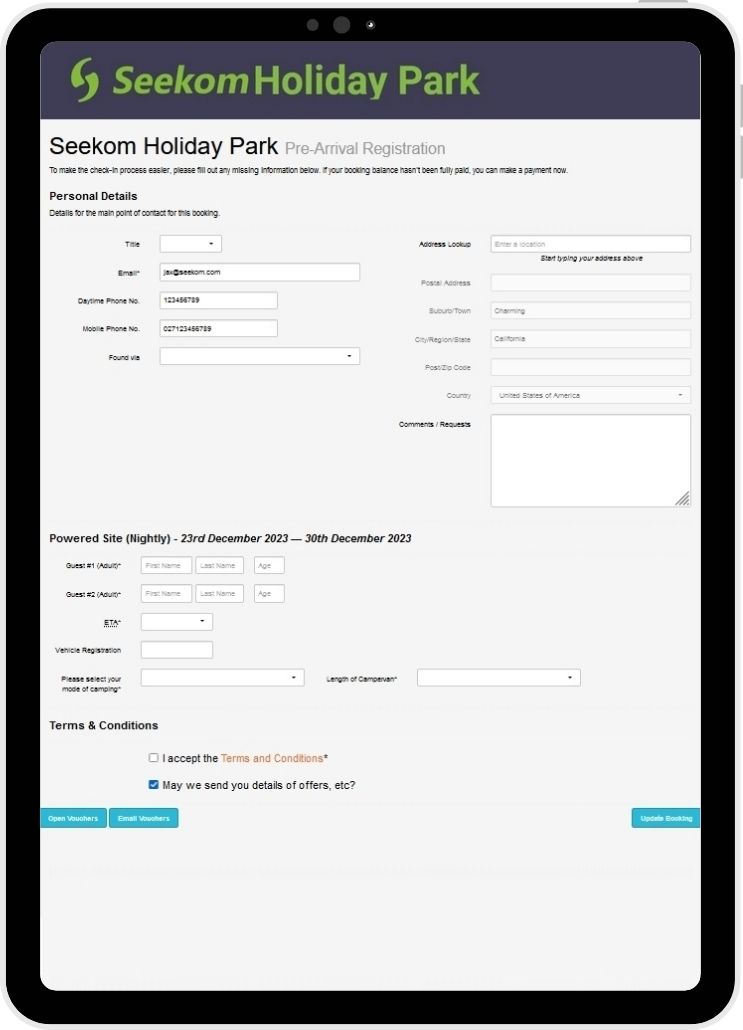
2. Harness the power of scheduled emails
Scheduled emails are a powerful tool that all properties should be taking advantage of. This functionality has been enhanced recently to allow you to schedule guest emails for a particular time of day or to be sent only to guests staying in a particular room type. Some common ways to use scheduled emails include:
- After a guest has made a booking (Thanks for booking. Please let us know when you expect to arrive and your vehicle registration if you wish to park with us)
- Before a guests arrival (Your door code is XYZ, please come to reception upon arrival to check in and receive your welcome back)
- Before a guest’s departure (Would you like a late check out?)
- After a guest’s departure (We can’t wait to see you again, leave us a review!)
If you like our scheduled emails, keep an eye out for our upcoming SMS upgrade. This will allow you to add automated and scheduled text messaging, making it simple to reach guests through more than one channel and while they are on the road during their travels. We all know some people avoid opening emails while on holiday and the stats show SMS messages have a higher open rate than emails (perhaps due to the vibration settings most of us still have set up on out phones for text messages), so the upcoming upgrade will take customer communications to the next level
3. Ensure minimum stays and peak season rates are up to date
Have you got your peak season minimum stays and rates set up? This is common practice in many countries and can reduce your team’s administrative load if staff do not have to deal with quite so many short-stay guests and the associated need to re-stock and re-prepare rooms, for each and every one of them. Setting peak rates can help to generate more revenue during a time of the year when your staffing costs often increase due to an influx of visitors and the need to pay staff for working on statutory holidays over the holiday period.
4. Train new staff and ensure they have appropriate permissions
Don’t wait until things get busy to train up new staff on how to use and make the most of Seekom – make sure to think ahead.
The lead-up to summer is the ideal time to ensure new staff are comfortable using the system, and to make sure they have the correct permissions in place for the areas of Seekom they might need to use when guests start coming through the doors.
We have a range of guides and videos that can help you and your team make the most of Seekom features, from how to make a booking through to housekeeping and even payments and invoicing.
If you want to engage with other users or propose new features, make sure to log into the Seekom Community to share your ideas.
5. Promote any pet friendly options you offer
For many people, a summer holiday means leaving their pets at home. If you offer pet friendly accommodation at your place, make sure to promote it widely.
Seekom users in New Zealand can use our new Pet Friendly Stays website to promote their offerings. The site allows you to pick and choose which room types are displayed on the website, set rules for guests staying with pets, and generally showcase your pet friendly accommodation offerings. All bookings made via Pet Friendly Stays go straight into your Seekom account so all your information is in one place.
Of course, if you’re elsewhere in the world, you don’t have to miss out on this segment of the market. There are a variety of other websites where you can promote your pet friendly accommodation to the world.
6. Use vehicle registration printing to help identify authorised guests
When things get busy, every minute counts. Seekom’s Vehicle Label printing feature allows you to easily print off the registration number of guests’ vehicles during the check in process, for display on their windscreen. This makes it simple to identify which vehicles belong on the premises.
To enable this feature in your Seekom iBex account, email our support team and they will get things set up.
Once enabled, you will be able to print vehicle registrations by visiting the ‘Arrivals and Departures’ page in Seekom iBex, finding the guest you are checking in on the list and then selecting the small ‘Print Vehicle Label’ option on the right hand side.
Once printed, the label displays:
- the guest’s departure date
- the unit, or site or room they are in their vehicle registration number.
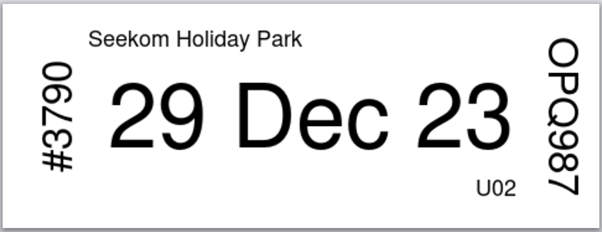
7. Manage days when your property is closed to check-ins or departures
Sometimes you may want to close your property to new check-ins or departures on specific days of the year. If you want to do this at your place to ease the pressure on staff - perhaps on Christmas Day – then Seekom makes it easy.
You can manage any days when your property is closed to check-ins and check-outs from the Manage Property screen of your Seekom iBex system.
This feature still allows guests to stay during the period you set, but it will block people from either arriving or departing on the dates you choose, based on what you set.
Some managers use this for periods like Christmas Day, when their property is bound to be full of guests already and they want to reduce the foot traffic coming through reception so staff can enjoy the day as well.
Read the instructions for setting a property closure in our help section for more information.
It’s your time to shine!
With summer on the horizon for many of you, now is the ideal time to swing into action. You may not tick off absolutely everything on this list, but by tackling at least a few of these, you can reduce those stress levels when the summer guest rush arrives.

Note: Something you may not know, is that we also build websites. Many of our customers have Seekom built, fully managed websites which we maintain, including SEO management. If you’re interested in finding out more about this, get in touch.
Sign Up For Updates
Recent Blog Post
Smarts to help you operate more effectively and efficiently. From guides of our systems and integrations to tips and tricks you can use every day - we've got you covered.
One of our amazing business development managers will be in touch to showcase our product to you and talk you through how we can help grow your business.
Contact Us
PO Box 9300, Marion Square, Wellington 6141
Phone (NZ) : +64 4 974 9588
Phone (UK) : +44 20 3835 5939
Support: support@seekom.com
Websites: webhelp@seekom.com
Copyright 2022 © Seekom Limited (NZ owned)

